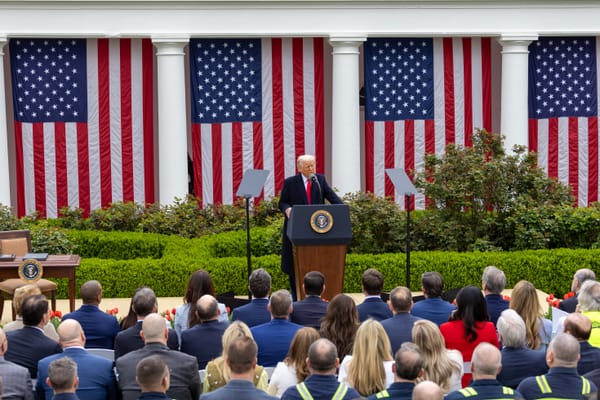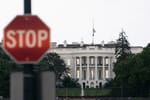By Ryan Yeh
Current U.S. trade policy, particularly its confrontational stance towards China, is increasingly hobbled by a deep internal incoherence of three critical fractures. First, a jarring disconnect between strategic ambitions and stark economic constraints; second, an irreconcilable tension between populist protectionism and the nature of capital to pursue profits globally; and third, a myopic focus on short-term political wins at the expense of long-term industrial vitality. Together, these contradictions render the policy’s centerpiece—high tariffs—an unsustainable tool, its efficacy steadily eroding under the weight of its contradictions.
1. Strategic Ambition vs. Economic Reality: Containment Goals Clash with Supply Chain Dependence
Washington's foreign policy establishment has elevated "containing China's rise" to a top priority, deploying trade measures—tariffs, tech restrictions, and calls for "de-risking"—as key levers. The goal is clear: to recalibrate global trade in America’s favor and stifle China’s economic influence.
Yet this bold strategy collides with harsh economic truths. After decades of globalization, the U.S. economy remains deeply enmeshed with China’s supply chains. From consumer electronics to critical minerals, China’s manufacturing dominance—built on scale, efficiency, and cost—is woven into the very fabric of American commerce.
Tariffs, the policy’s blunt instrument, often backfire. They inflate costs for American importers, feeding inflation and squeezing household budgets. Crucially, finding viable alternatives to these intricate supply chains is neither quick nor cheap. Strategies like "friend-shoring" or "near-shoring" may sound appealing, but they cannot replicate China’s infrastructure, labor pools, or cost advantages overnight. Many U.S. companies find that shifting away from China means higher expenses, thinner margins, and brittle supply lines – a direct hit to competitiveness.
Thus, the strategic impulse to "contain" is fundamentally constrained by the economic reality of "dependence." This blunts the impact of tariff policies: they fail to derail China’s economic momentum (as China adapts by diversifying markets and upgrading industries) while inflicting considerable pain on the U.S. economy. A policy that undermines domestic resilience to pursue geopolitical goals is, by definition, self-sabotaging.
2. Political Narrative vs. Capital Imperatives: Protectionist Rhetoric Clashes with Global Profit Motives
Politically, U.S. trade policy leans heavily on protectionist rhetoric — "America First," "reshoring jobs," and battling "unfair competition." These slogans blame trade deficits and industrial decline on unfair competition, particularly from China, and play well in Rust Belt towns and on campaign trails, framing tariffs as a muscular defense of American workers.
But this narrative ignores a stark reality: capital follows profit, not patriotism. For U.S. multinationals, China is both a production powerhouse and a colossal consumer market. Restrictive tariffs disrupt the very supply chains and revenue streams these companies rely on. Unsurprisingly, corporate lobbying has watered down many trade measures, leaving a patchwork of exemptions and loopholes.
This conflict between political rhetoric and capital's imperatives leads to a half-hearted trade war. Politicians talk tough, but powerful business interests work behind the scenes to mitigate or circumvent policies detrimental to their global operations. The result is often a selective, fragmented tariff regime or policies that generate more noise than substantive, long-term industrial restructuring. The global profit-seeking nature of capital acts as a powerful counterweight, diluting the impact of protectionist political narratives.
3. Short-Term Tactics vs. Long-Term Costs: Trading Competitiveness for Votes
The third fracture lies in the policy's heavy skew towards immediate political gratification, potentially at the expense of America's long-term industrial health. In election seasons, tough-on-China rhetoric and tariff hikes deliver instant gratification—a way to signal resolve to key voters. But real industrial competitiveness isn’t built on tariffs; it requires decades of investment in R&D, education, and infrastructure.
Simply erecting tariff walls to shield inefficient industries does little to enhance their fundamental competitiveness. On the contrary, it can breed complacency, removing the pressure to innovate and modernize. Worse, tariffs raise costs for cutting-edge sectors that rely on global supply chains, stifling innovation.
Meanwhile, trade conflicts alienate foreign talent and investors, precisely the resources needed for long-term growth. Funneling significant political capital and attention into tariff adjustments and trade disputes distracts from more fundamental, albeit less politically expedient, investments in education, science, and infrastructure.
Prioritizing electoral optics over foundational investments is like "robbing Peter to pay Paul": it may win a few votes today but weakens the economy tomorrow.
The Inevitable Bind of Contradictions
Essentially, U.S. trade policy is ensnared in a trilemma – caught between strategy and reality, politics and economics, immediate gains, and lasting strength. These deep-seated structural contradictions significantly limit the effectiveness and sustainability of a tariff-centered strategy. It cannot fully achieve its geopolitical objectives without harming its own economy; it struggles to reconcile protectionist sentiments with the global nature of its dominant corporations; and its focus on immediate political rewards risks overlooking the very sources of future national strength.
Washington must move beyond tariffs and face the truths that interdependence is inescapable, that competitiveness requires investment, and that a sustainable strategy demands more than political theatrics. Otherwise, America's trade policy pendulum will continue to swing wildly between these contradictions, struggling to find a stable, effective equilibrium.
Ryan Yeh is a Beijing-based observer of international affairs. The views don't necessarily reflect those of BeijingReviewDossier.








